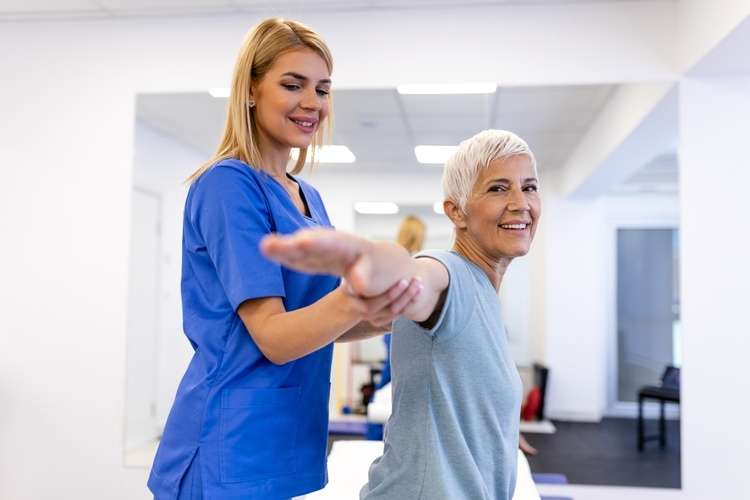Life After a Stroke: Managing CVA Symptoms and Recovery
Recovering from a cerebrovascular accident (CVA) involves physical, emotional, and cognitive challenges. Every stroke experience is different, but rehabilitation and consistent care can help regain function and improve quality of life. Understanding the recovery process is key to long-term success.

What are the immediate steps after a stroke?
The first few days and weeks following a stroke are critical for recovery. Immediate medical attention is essential to minimize brain damage and prevent further complications. Once the patient is stabilized, the recovery process begins with a comprehensive assessment of the stroke’s impact on physical, cognitive, and emotional functions.
A team of healthcare professionals, including neurologists, physiotherapists, occupational therapists, and speech therapists, work together to create a personalized rehabilitation plan. This plan addresses the specific needs of the patient and targets the areas most affected by the stroke.
How does physical rehabilitation aid stroke recovery?
Physical rehabilitation is a cornerstone of stroke recovery. It focuses on restoring motor function, improving balance, and regaining independence in daily activities. The rehabilitation process typically includes:
-
Physical therapy: Exercises to improve muscle strength, coordination, and mobility.
-
Occupational therapy: Activities to enhance fine motor skills and daily living tasks.
-
Speech therapy: Techniques to improve communication and swallowing difficulties.
Physical rehabilitation often begins in the hospital and continues on an outpatient basis or through home-based programs. The intensity and duration of therapy depend on the severity of the stroke and the patient’s progress. Consistency and persistence in following the rehabilitation program are crucial for optimal recovery.
What role does cognitive and emotional support play?
Strokes can affect cognitive functions such as memory, attention, and problem-solving skills. Cognitive rehabilitation helps patients relearn these skills or develop compensatory strategies. This may involve:
-
Memory exercises and techniques
-
Attention and concentration training
-
Problem-solving and decision-making tasks
Emotional support is equally important, as many stroke survivors experience depression, anxiety, or mood swings. Psychological counseling, support groups, and in some cases, medication, can help manage these emotional challenges. Family involvement and education are also crucial in providing a supportive environment for recovery.
How can lifestyle adjustments prevent future strokes?
Preventing a recurrent stroke is a vital aspect of long-term recovery. Lifestyle adjustments play a significant role in reducing the risk of future strokes. Key areas of focus include:
-
Diet: Adopting a heart-healthy diet low in saturated fats and rich in fruits, vegetables, and whole grains.
-
Exercise: Regular physical activity, as approved by healthcare providers.
-
Stress management: Implementing relaxation techniques and stress-reduction strategies.
-
Medication adherence: Consistently taking prescribed medications for conditions like hypertension or high cholesterol.
-
Smoking cessation: Quitting smoking, if applicable, as it significantly increases stroke risk.
These lifestyle changes not only help prevent future strokes but also contribute to overall health and well-being during the recovery process.
What advancements in stroke treatment are improving outcomes?
Recent advancements in stroke treatment have significantly improved recovery outcomes. Some notable developments include:
-
Advanced imaging techniques for faster and more accurate diagnosis
-
Improved clot-busting medications and mechanical thrombectomy procedures
-
Virtual reality and robotics-assisted rehabilitation
-
Stem cell therapies (still in research phases)
-
Brain-computer interfaces to aid communication for severely affected patients
These innovative approaches, combined with traditional rehabilitation methods, are offering new hope and possibilities for stroke survivors.
How can anxiety be managed during stroke recovery?
Anxiety is a common challenge for stroke survivors, often stemming from the uncertainties of recovery and changes in daily life. Managing anxiety is crucial for overall well-being and can positively impact the recovery process. Strategies for anxiety treatment in stroke recovery include:
-
Cognitive-behavioral therapy (CBT): Helps patients identify and change negative thought patterns.
-
Relaxation techniques: Deep breathing exercises, progressive muscle relaxation, and meditation.
-
Medication: In some cases, anti-anxiety medications may be prescribed under medical supervision.
-
Support groups: Sharing experiences with other stroke survivors can provide emotional relief.
-
Regular exercise: Physical activity, as approved by healthcare providers, can help reduce anxiety.
It’s important to communicate any feelings of anxiety to the healthcare team, as they can provide appropriate resources and treatment options tailored to the individual’s needs.
Life after a stroke presents numerous challenges, but with comprehensive care, dedicated rehabilitation, and a supportive environment, many individuals can achieve significant improvements in their quality of life. The journey to recovery is unique for each person, and patience, perseverance, and a positive outlook are key factors in navigating this path successfully.
This article is for informational purposes only and should not be considered medical advice. Please consult a qualified healthcare professional for personalized guidance and treatment.




